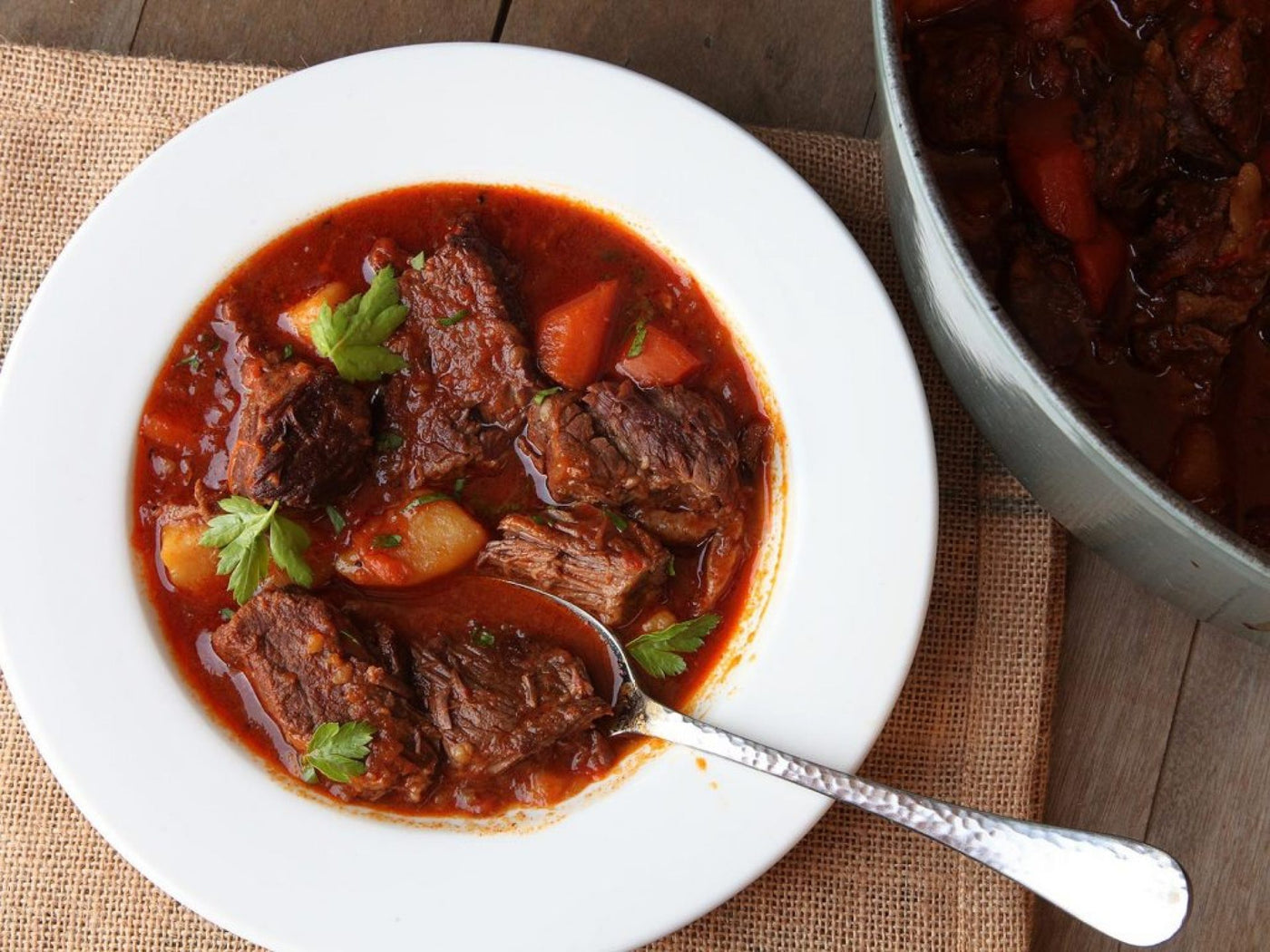Your Cart is Empty

Hungarian goulash is a national staple in Hungary. Its bright red, hearty, and tantalizing broth is perfect for a year-round beef stew and is paleo to boot. Wandering around Budapest, you can find it served at almost any cafe or restaurant, for lunch or dinner. Local paprika is sold either sweet or spicy and is used in many Hungarian dishes. I purchased mine at the Grand Market Hall in Budapest, a multi-level busy bazaar filled with paprika stands draped in dried chili strands, cured sausage vendors, and local trinket mongers. If you’re lucky, a vendor will give you a taste of their spices before you purchase them.
Paprika is a spice made from ground red peppers, either sweet or of hotter varieties. While it is found in many Hungarian dishes, the spice originated in Mexico and was introduced to Spain in the 16th century. Paprika was traded among the Iberian peninsula, Africa, Asia, and eventually central Europe, where it took root in Hungary. It is now grown mainly in Hungary, but also in the Netherlands and Spain. Spanish paprika is known for being smoky in flavor. It is sold in several different grades, each with unique qualities. For example, “Noble sweet” paprika has a sharp smell, is sweet and mild, and is the most commonly exported type of the spice. “Strong” paprika is the hottest and is light brown in color instead of the vibrant red of the Noble sweet variety. Each serves a different purpose depending on the dish you are making and the flavors you want to showcase.
Using quality spices is the key to a delicious goulash. Bright and sweet paprika, whole caraway seeds, marjoram, and bay leaves lend unique flavors to the dish. While you may not have caraway seed and marjoram on hand, you’ll be glad you do after purchasing them for this recipe. High-grade beef and organic vegetables are also important, and the dish is relatively affordable so don’t skimp on the meat and potatoes. After you make this recipe once, you can adjust a number of vegetables you use. Add more potatoes and another carrot if you’d like it to be heartier, or keep the original amount and add some additional water and paprika if you want a more soup-like consistency. The nice thing about this is you can taste it as you go (after the meat has cooked of course,) and adjust the seasonings to your liking.
You can interchangeably use several types of beef stew meat, chuck steak or sirloin work well. This recipe can be used for a dinner and leftovers for a day or two, or for a group of 4-6 people. The prep work is easy, just chopping vegetables and cubing the meat. However, cook time is between 1 ½ and 2 hours, so give yourself plenty of time to start the dish before dinner guests arrive!
This is a healthy, paleo soup that is both easy and nutritious. Become familiar with paprika, and you’ll find it is a staple in other amazing dishes that you will want to try!